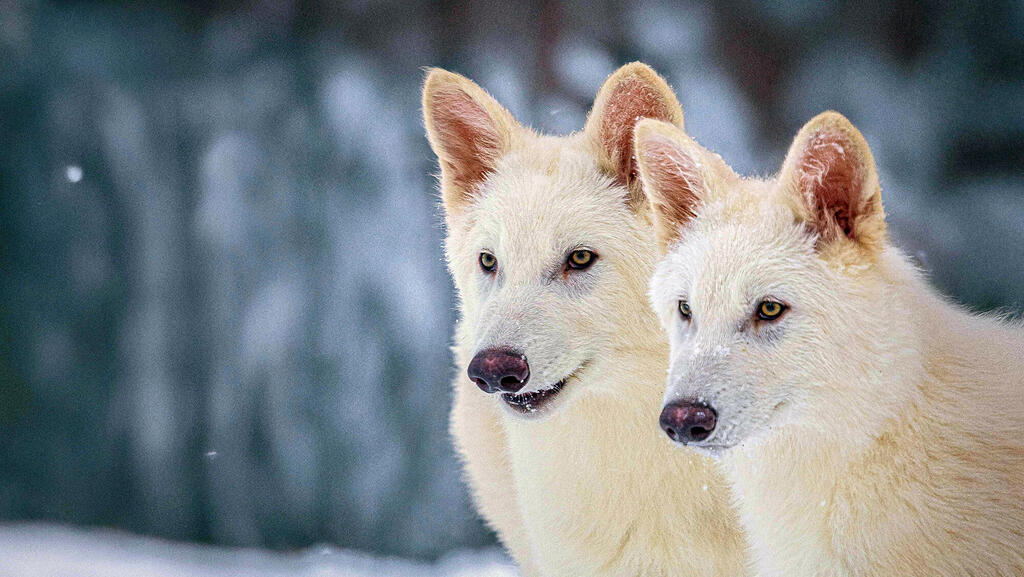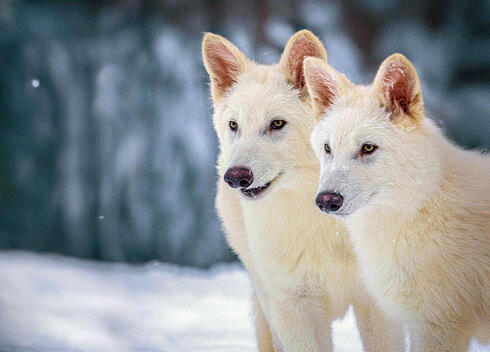
How the dire wolf became a $10 billion biotech fantasy
Scientists fear de-extinction buzz could erode real-world conservation efforts and public trust in science.
A media frenzy erupted last week over photos and videos of a man cradling two snow-white, wolf-like pups, their howls echoing on camera. These animals, presented by Dallas-based biotech company Colossal Biosciences, were touted as a monumental breakthrough: the supposed resurrection of the dire wolf, a species believed to have gone extinct some 12,500 years ago. Inspired by the massive canines of Game of Thrones, the story made for irresistible headlines. But within days, scientists and conservationists around the world issued a clear warning: this is not a dire wolf, and it’s not de-extinction. It’s a media stunt — and a dangerous one.
The dire wolf, once a powerful predator across North and South America, is not walking the Earth again. What Colossal has achieved, according to experts, is the creation of genetically modified gray wolves engineered to resemble their ancient counterparts. Using CRISPR gene-editing technology, researchers altered parts of gray wolf DNA with fragments derived from the fossilized remains of dire wolves. The embryos were then implanted into surrogate gray wolves, resulting in three white pups that resemble dire wolves in appearance — but not in substance.
While the company has claimed to have brought back “the world’s first animal to return from extinction,” scientists argue that this is misleading. Beth Shapiro, a scientist at Colossal and a prominent figure in paleogenetics, offered a more tempered description, saying the company had reanimated the “functional essence” of ancient wolves. In other words, the result may look like a dire wolf — but genetically and ecologically, it is not.
Experts: “It’s genetic LEGO, not resurrection”
Professor Ariel Chipman, a developmental biologist at the Hebrew University of Jerusalem, is among those urging skepticism. “Colossal launched with absurd goals,” he said. “Now they’re doing genetic LEGO: assembling select traits so that a gray wolf looks like a dire wolf. That’s not de-extinction.”
Chipman emphasized the biological and technological limitations: “We can sequence fragments of ancient DNA, but we cannot reconstruct a complete, viable genome from it — let alone grow a functioning organism from that genome. It’s nothing like cultured meat, where you start with an intact genome. This has no practical value, and worse, it risks shifting public perception. People will think we can bring species back, so why bother conserving them?”
He pointed to troubling signs that such thinking is already influencing policy. In the wake of Colossal’s announcement, the Trump administration floated the idea of weakening endangered species protections — citing future technology that could “bring them back.”
“This is incredibly dangerous,” Chipman warned. “The idea that we can ignore the environment today and fix it later with speculative tech is a fantasy. It opens the door to environmental collapse, propped up by false promises.”
Is there even a world to return to?
The concept of bringing back extinct species becomes even more questionable in light of the world’s current biodiversity crisis. According to the International Union for Conservation of Nature, over 47,000 species are currently endangered. Their decline is driven primarily by habitat destruction, climate change, overhunting, and illegal trade.
“We’re watching ecosystems unravel,” said Professor Tamar Dayan, chair of the Steinhardt Museum of Natural History at Tel Aviv University. “Israel is no exception. Our butterfly populations are down a third. Our coral reefs are collapsing due to the loss of sea urchins. Predator populations are falling. And zoonotic diseases are spreading. This is not just about saving nature. This is about public health, food security, and the global economy.”
Indeed, the stakes are enormous. The World Economic Forum estimates that over half of global GDP — roughly $44 trillion — depends on ecosystem services such as pollination, clean water, climate regulation, and soil fertility. Some economists believe that number is conservative: a recent BCG report puts the annual value of natural systems at $179 trillion.
Despite this, the world is investing only 17% of the $824 billion required annually to protect global biodiversity.
Related articles:
A $10 billion distraction?
Colossal Biosciences is currently valued at $10 billion, bolstered by venture capital and the seductive promise of de-extinction. But experts say those resources would be better spent protecting species that are still with us. According to a Nature study, the cost of rearing a woolly mammoth-like creature is roughly equal to saving the endangered Asian elephant — and that's before you account for the technological hurdles.
The commercial potential, some argue, lies not in real conservation but in selling biodiversity credits — a carbon-credit-style market that has so far proven rife with greenwashing and inefficacy.
Team CRISPR or Team Conservation?
“Nobody doubts the technical achievement,” said Dayan. “Yes, it’s impressive that they edited a few genes using CRISPR. But does this help our forests, oceans, or agricultural systems? No. It’s a distraction.”
Instead, she calls for a rethinking of our economic and social systems. “We need to change how we plan cities, consume resources, grow food, and raise livestock. We need to educate the public and shift funding to real environmental restoration. Preserving biodiversity is not just an ecological concern — it’s the foundation of a livable future.”
In a world grappling with species collapse, she argues, gray wolves that look like dire wolves are a curious novelty — not a solution.
“If we don’t act now, our grandchildren won’t inherit a planet full of reborn beasts from the Ice Age,” Dayan concluded. “They’ll inherit a wasteland. And they’ll ask what the hell we were thinking.”

